The future of outdoor dining in NYC will feature 'roadway cafes,' but no more dining sheds
Feb. 15, 2022, 2:39 p.m.
The DOT said dining sheds are out, but roadway cafes are in for 2023.
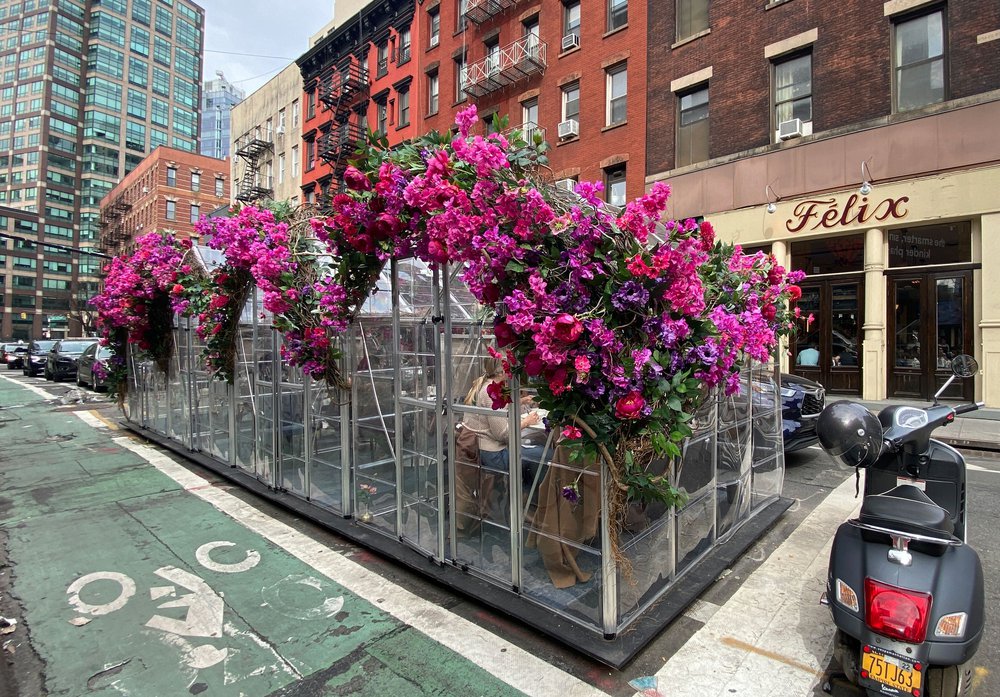
Structures like this will not be a part of the future outdoor dining landscape.
Outdoor dining has long existed in New York City, but the pandemic has reshaped the open-air landscape for eateries. It's made permitting easier, provided more flexibility and allowed — like 'em or not — for some truly creative dining sheds to pop up throughout the five boroughs.
The look of the sheds has ranged from the delightful to the apocalyptic, and they are often fully enclosed (negating their purpose during COVID). But they were never meant to be permanent and, after this year, will be phased out.
The new rules that will shape the future of outdoor dining are being solidified — and it won't look like what we saw during the pandemic, but it won't necessarily look like our pre-pandemic options either.
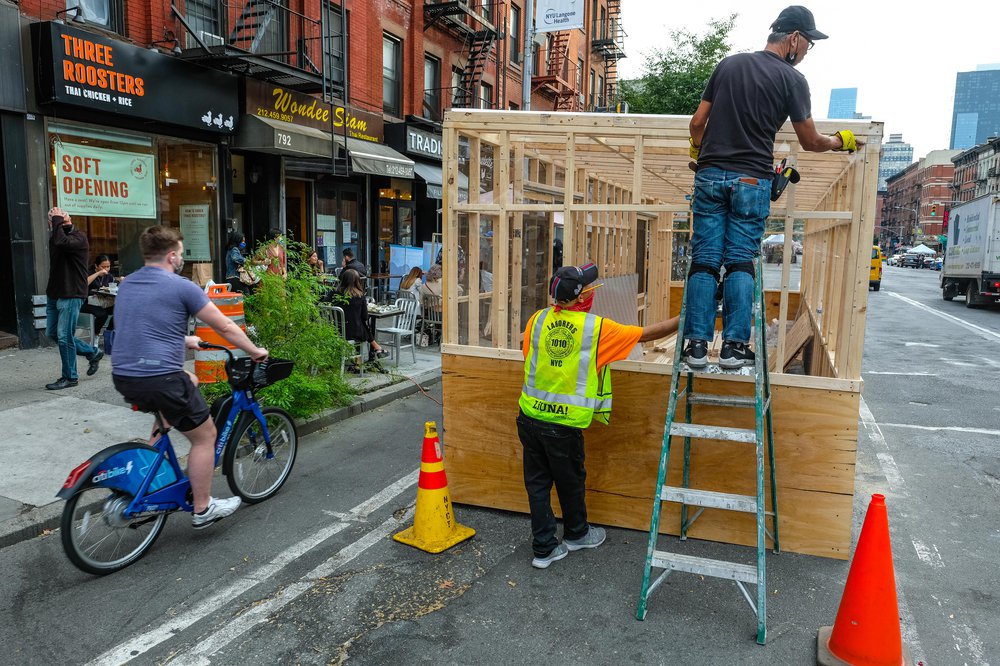
Tiny homes will not be a part of the future outdoor dining landscape.
The city's Department of Transportation (DOT) and Department of City Planning (DCP) are working alongside Alfresco NYC and a team of urban designers from different city agencies to help shape the new look — they even asked New Yorkers for opinions last year, but as Grub Street recently pointed out, no one will ever be completely happy. Drivers want parking spots, cyclists want bike lanes, some residents want peace and quiet, others want a cute little yurt nearby to dine inside. The solution is in the balance, and if this month's 8-hour public hearing is any indication, it's going to be difficult to find the sweet spot for everyone.
The big change is that the DOT officials said they do not envision sheds, which they classified as tiny houses, to be a part of the permanent program. The sheds have been the main focus of contention at public meetings, with vocal community members calling them eyesores and magnets for noise, trash and rodents. Ultimately, the DOT's goal is to make outdoor dining structures both open and easily (re)movable, whereas now the sheds are enclosed and often too difficult to move once built.
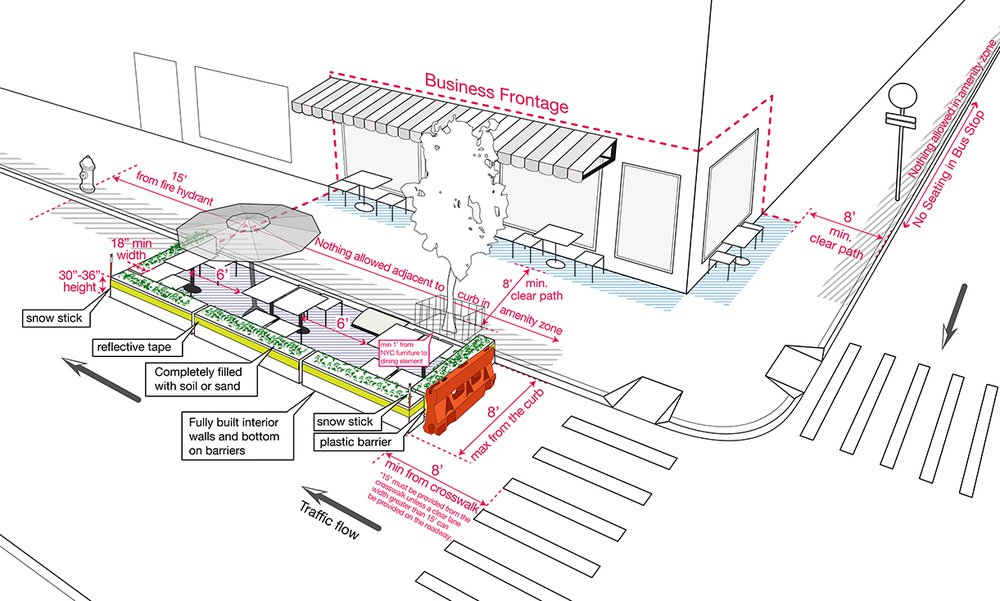
The future? This drawing shows outdoor dining on a street with an orderly flow of people and vehicles and structures.
Instead, the options will be more flexible, though the agency claims it will still allow room for creativity. The department broke it down into two options: roadway cafes and sidewalk cafes, both of which will have to be designed and operated pursuant to rules currently being drafted.
- Roadway cafe: This is a formalization of the emergency Open Restaurants program, where a portion of the curb lane or parking lane of a roadway is used for outdoor dining.
- Sidewalk cafe: This is what existed pre-pandemic, where a portion of the sidewalk in front of the restaurant is used for outdoor dining.
At this month's hearing, Open Restaurants director Julie Schipper stated that — instead of enclosed wooden sheds — umbrellas, tents and barriers would be allowed. In the permanent blueprint, the city is focusing on three main pieces: ADA compliance; enhancing safe interactions between diners, drivers, cyclists and pedestrians; and creating shade for outdoor dining while still meeting their design goals (i.e. no tiny houses).
And listen, things got a little Bourbon Street-style crazy in 2020, so the agency will also need to come up with solutions to noise — this will involve things like hours of operation. (Nothing some to-go cocktails won't take care of.)
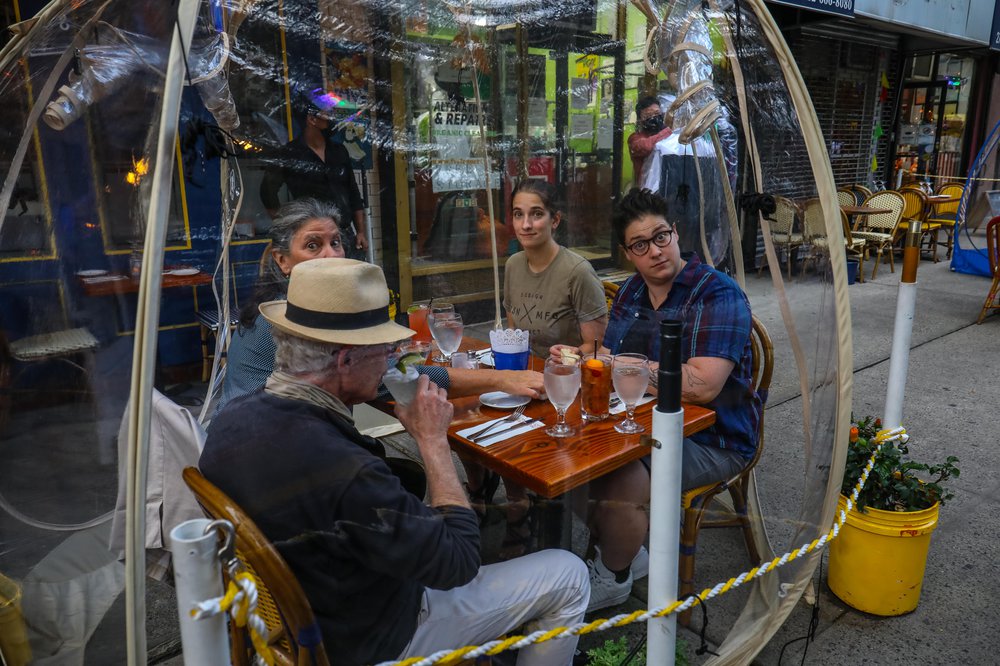
It's unclear if sidewalk bubbles will be allowed.
There are now more than 12,100 restaurants in the city that are currently permitted for outdoor dining, but when the new program is established they will all need to reapply. The DOT would not comment on whether it expects more restaurants to apply under the new program, but officials are leaning towards making it more accessible.
A top priority moving forward will be an equitable program that is accessible to all types of restaurants.
"By expanding the program to restaurants in all parts of the city and providing a new roadway seating option, the program will particularly help businesses in low income neighborhoods and communities of color," said Transportation Commissioner Ydanis Rodriguez, in prepared remarks for this month's hearing.
The DOT is also proposing reduced fees, and the new roadway cafe program will require fewer fees than sidewalk cafes. Other fees will be finalized during the DOT rulemaking process. Rodriguez said there will be an initial license fee for both sidewalk and roadway cafes of $1,050, and a renewal fee of $525.
He added that, overall, it would be "a simpler process for restaurants... but will still require community board review for sidewalk cafes, and notification and a public revocable consent hearing for roadway cafes."
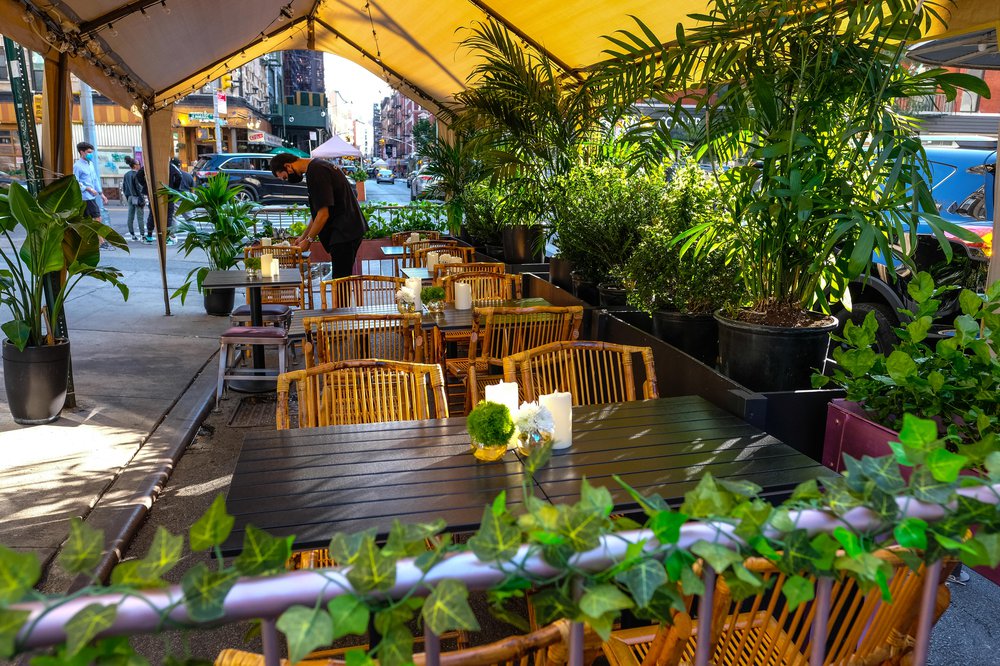
Will plants be allowed?
While studies have shown the pandemic-era of outdoor dining — which the city estimates saved 100,000 jobs — has been largely embraced and supported by locals across the five boroughs, some have actively fought the sidewalk sheds, citing quality of life issues.
Read More: DOT Begins Five-Borough Tour Exploring The Future Of Open Restaurants
In December, the DOT began meeting with communities in all five boroughs to collect feedback, and now says it's working with the Department of Health and Sanitation Department on pest management protocol and standards that will be folded into the new design requirements.
The proposed legislation is being reviewed by the City Council this month, and the DOT hopes to have a permanent program in place to begin in 2023.